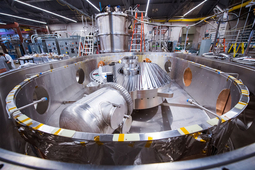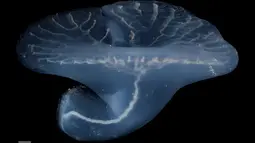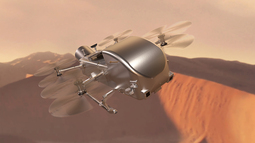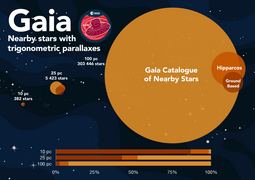Alright /learn/, need your help. I'm trying to get my brain back into gear and need some book recommendations.
Specifically, I'm looking for:
• Chemistry: From the very basics all the way up to high school level. Need a solid foundation.
• Programming: Focusing on Java, Python, and C#. Gotta get my coding skills sharp again.
So, /learn/, drop your list of must-read books for a budding (or re-budding) scientist/programmer. Bonus points for textbooks with good exercises and explanations. Let's get this knowledge brewing. Hit me with your best shot.
https://twitter.com/Peter_J_Beck/

https://www.nature.com/articles/s41467-024-48886-x
В 1936-1937 была проведена аэрофотосъемка береговой линии Антарктиды. В 1956-1973 гляциологи снова провели аэрофотосъемку.
В 2023 ученые из Норвегии, Дании и Франции используя эти ранние снимками провели исследование ледника в Восточной Антарктиде.
Сочетая их с современными спутниковыми снимками, ученые оценили высоту, скорость течения и фронтальные изменения ледников в заливе Лютцов-Хольм, у побережий Земли Кемпа, Земли Мак-Робертсона и вдоль берега Ингрид Кристенсен с 1937 по 2023 год.
У ледников залива Лютцов-Хольм геологи зафиксировали отступление в период с 1937-го по 1980-е годы, в середине 2000-х (за исключением ледника Ширасе) и между 2016 и 2018 годом.
Ледник Лангховде (Langhovde) и Ховдебрин (Hovdebreen) за 85 лет изменился менее чем на километр, а некоторые участки даже превысили площади в 1937-м.
Абсолютные высоты остаются неизменными, а вдоль побережья Сева (Syowa) ледники растут по несколько сантиметров за год.
Ледник Ширасе — исключение, он утолщается со скоростью полметра в год.
Рост объема льдов совпадает с долгосрочным выпадением снега вдоль побережья Земли Кемпа и Мак-Робертсона (все недалеко от моря Содружества). Там количество осадков увеличилось почти на 50% с 1940 по 2022 год, а в заливе Лютцов-Хольм наблюдается почти постоянный снегопад.
Предварительные выводы -- наблюдается практически непрерывное накопление массы льда в Антарктиде за последние 85 лет.
https://web.archive.org/web/20240530153805/https://www.nature.com/articles/s41467-024-48886-x

https://news.mit.edu/2024/tests-show-high-temperature-superconducting-magnets-fusion-ready-0304
В серии из шести научных статей в мартовском выпуске журнала IEEE Xplore учёные Массачусетского технологического института рассказали о разработке и принципах работы новых электромагнитов на основе высокотемпературной сверхпроводимости. Эта разработка названа крупнейшим за последние 30 лет прорывом в области создания коммерчески выгодных термоядерных реакторов.
Первые испытания масштабного прототипа высокотемпературного сверхпроводящего электромагнита состоялись 5 сентября 2021 года в лабораториях Центра науки о плазме и термоядерного синтеза Массачусетского технологического института (PSFC). Изделие массой около 9 тонн создало электромагнитное поле силой 20 тесла. Конструкция электромагнита была создана с нуля с использованием новых принципов и масштабные испытания должны были подтвердить правильность расчётов, моделей и самой идеи, которая на тот момент была крайне новаторской.
До появления этой разработки существующие на тот момент технологии и электромагниты уже могли создавать поля необходимой напряжённости, чтобы удерживать нагретую до 100 млн °C плазму в изоляции от стенок рабочей камеры. Однако эффективность работы подобных систем была далека от требований рентабельности. Учёные из MIT с коллегами из компании Commonwealth Fusion Systems смогли создать намного более компактные и дешёвые в производстве и поддержке электромагниты, которые позволили заявить об их впечатляющей энергоэффективности.
«За одну ночь это практически изменило стоимость ватта термоядерного реактора почти в 40 раз», как позже заявили участники эксперимента. «Теперь у термоядерного синтеза есть шанс, — утверждают учёные. — Наиболее широко используемая конструкция для экспериментальных термоядерных устройств, получила шанс стать экономичной, потому что у вас появились скачкообразные изменения в этой области». Это способность значительно уменьшить размер и стоимость объектов, которые сделали бы возможным термоядерный синтез.
Один из секретов успеха новой конструкции электромагнитов стал отказ от изоляции проводов в обмотках катушек. В это трудно поверить, но учёные использовали в обмотке голые провода без опасений пробоев и коротких замыканий. Эффект сверхпроводимости создал в обмотках такие условия, что замыканием между витками можно было пренебречь. Эксперимент подтвердил правильность выбора. Катушка электромагнита осталась надёжной и стала гораздо меньше в размерах, а также по стоимости и с точки зрения общего размера реактора.
В качестве обмотки был выбран высокотемпературный сверхпроводник REBCO — это редкоземельный оксид бария-меди, который позволяет достигать сверхпроводящего эффекта при температуре 20 К — это на 16 К выше обычной сверхпроводимости, что меняет правила игры несмотря на кажущуюся небольшую разницу в глубине охлаждения. На один электромагнит ушло 300 км полосы REBCO. Только представьте, сколько экономии пространства в катушке стало возможным благодаря отказу от изоляции этого провода.
Позже во время испытаний магнита на критических режимах были проверены теоретические модели его поведения вплоть до частичного разрушения (расплавления обмотки). Это было важно для улучшения конструкции и отработки эксплуатационных характеристик электромагнитов для использования в будущих термоядерных реакторах. Выход сегодня статей по разработке стал возможным после получения патентов на конструкцию электромагнитов и принципы их работы. Исследование приближает тот момент, когда на Земле может зажечься рукотворное Солнце, а энергия в электросетях станет бесконечной и практически чистой.
Deimos transit
On Sol 1037 ( Jan. 20, 2024 ) the Perseverance rover observerved this transit of Mars' smallest moon Deimos.
According to the image metadata the transit was on January 20th and started at 01:32:18 UTC and lasted until 01:34:18 UTC.
In local mean solar time on Mars this corresponds to 08:41:34 to 08:43:31.
The full sequence lasted 137 seconds in reality and is shown at 10x speed.
Credit: NASA/JPL-Caltech/ASU/Simeon Schmauß
https://www.flickr.com/photos/semeion/53481345691/

The mysterious sea creature Dendrogramma was rated one of the top-ten new species of 2015. There was speculation it might even represent a new invertebrate phylum, a tremendously rare event. Further specimens have revealed the organism was so hard to classify because the specimens are not complete animals, as appeared, but appendages. Nevertheless, many questions remain unanswered.
In 1986, two mushroom-looking specimens were captured near the bottom of Australia's Bass Strait. Taxonomists being few and over-stretched for the abundance of unknown Australian species, the items were preserved in formalin and neglected for decades.
In 2014, Danish scientists concluded these represented no mere new species, a common enough occurrence, but a new phylum. The blog Deep Sea News compared the claim to finding a vertebrate that was neither mammal, bird, fish, or reptile. Huge news if true.
The name Dendrogramma was given for the way the creature's branching veins resemble the tree of life, on which it appeared unplaceable. The specimens lacked the stinging cells that define true jellyfish and the rows of cilia comb jellyfish use to move. Many marine biologists were skeptical of the phylum claim, but no one knew what Dendrogramma was. The closest resemblance was to 560-million-year-old fossils.
Last year, Museum Victoria's Dr. Hugh MacIntosh pulled a fresh specimen out of the waters of the Great Australian Bite. “It was a ‘eureka’ moment! Holding one up to the light, the distinctive forked veins shimmered through the transparent body, and it suddenly dawned on me that we had rediscovered the elusive Dendrogramma,” MacIntosh said.
MacIntosh and colleagues have published what they have learned in Current Biology. DNA conclusively indicated Dendrogramma is a cnidarian, related to true jellyfish. The stinging cells were absent because the scientists lacked the complete organism. Instead, what they had was a bract, an easily detachable part used for defense. It was not previously recognized as such because bracts are usually smaller and less elaborate.
Although MacIntosh told IFLScience he collected “around 80” Dendrogramma bracts on the voyage, there still isn't a complete specimen. In some cases, MacIntosh told IFLScience, the main body remains attached, but these are surprisingly small and “may be juveniles.”
The list of unanswered questions is long. “We don't know why they have such big bracts, we don't know why we collected so many bracts without complete samples and we don't know how many bracts fit on each,” MacIntosh said.
Nevertheless, he added: “They're probably like other deep sea jellies, floating just off the sea floor, anchored with small tentacles and using stinging cells to feed on crustaceans on the sea floor.” The bracts, while tenuous, provide protection against predators, or even against the fragile main Dendrogramma body.
The survey took place to assess the little-known biology of the Bite, where oil companies are seeking to drill. MacIntosh couldn't comment on whether the discovery of such an unusual species will interfere with these plans.
https://www.iflscience.com/deep-sea-species-mystery-partially-explained-36142
Amazing new images of the moon Io have come down from the Juno spacecraft! This one shows the volcanic moon of Jupiter from only 2,800 kilometers away, which is the closest look we’ve gotten of Io since the Galileo orbiter over 20 years ago. Check out all those volcanoes!!!!
NASA/JPL-Caltech/SwRI/MSSS/Kevin M. Gill
https://deepspace.social/@kevinmgill/111672868392026150
https://deepspace.social/@kevinmgill/111676796209064427

https://youtube.com/watch?v=GvJtVOmFs5Q
NASA’s Deep Space Optical Communications experiment beamed an ultra-high definition streaming video on Dec. 11 from a record-setting 19 million miles away (31 million kilometers, or about 80 times the Earth-Moon distance). The milestone is part of a NASA technology demonstration aimed at streaming very high-bandwidth video and other data from deep space – enabling future human missions beyond Earth orbit.
“This accomplishment underscores our commitment to advancing optical communications as a key element to meeting our future data transmission needs,” said NASA Deputy Administrator Pam Melroy. “Increasing our bandwidth is essential to achieving our future exploration and science goals, and we look forward to the continued advancement of this technology and the transformation of how we communicate during future interplanetary missions.”
The demo transmitted the 15-second test video via a cutting-edge instrument called a flight laser transceiver. The video signal took 101 seconds to reach Earth, sent at the system’s maximum bit rate of 267 megabits per second (Mbps). Capable of sending and receiving near-infrared signals, the instrument beamed an encoded near-infrared laser to the Hale Telescope at Caltech’s Palomar Observatory in San Diego County, California, where it was downloaded. Each frame from the looping video was then sent “live” to NASA’s Jet Propulsion Laboratory in Southern California, where the video was played in real time.
https://en.wikipedia.org/wiki/Deep_Space_Optical_Communications

https://youtube.com/watch?v=GvJtVOmFs5Q
NASA’s Deep Space Optical Communications experiment beamed an ultra-high definition streaming video on Dec. 11 from a record-setting 19 million miles away (31 million kilometers, or about 80 times the Earth-Moon distance). The milestone is part of a NASA technology demonstration aimed at streaming very high-bandwidth video and other data from deep space – enabling future human missions beyond Earth orbit.
“This accomplishment underscores our commitment to advancing optical communications as a key element to meeting our future data transmission needs,” said NASA Deputy Administrator Pam Melroy. “Increasing our bandwidth is essential to achieving our future exploration and science goals, and we look forward to the continued advancement of this technology and the transformation of how we communicate during future interplanetary missions.”
The demo transmitted the 15-second test video via a cutting-edge instrument called a flight laser transceiver. The video signal took 101 seconds to reach Earth, sent at the system’s maximum bit rate of 267 megabits per second (Mbps). Capable of sending and receiving near-infrared signals, the instrument beamed an encoded near-infrared laser to the Hale Telescope at Caltech’s Palomar Observatory in San Diego County, California, where it was downloaded. Each frame from the looping video was then sent “live” to NASA’s Jet Propulsion Laboratory in Southern California, where the video was played in real time.
https://en.wikipedia.org/wiki/Deep_Space_Optical_Communications

NASA Authorizes Dragonfly Mission to Proceed With Estimated 2028 Launch Readiness Date
NASA’s Dragonfly mission team is moving on to the next stage of development on the revolutionary, car-sized nuclear-powered drone it plans to fly over and land on the organic-rich sands of Saturn’s large moon Titan.
NASA has authorized Dragonfly to proceed with work on final mission design and fabrication, known as Phase C. Earlier this year, Dragonfly passed all the success criteria of its Preliminary Design Review. The team also was asked to conduct a replan of the mission based on funding levels in the fiscal year 2024 president’s budget request. That replan has been completed and reviewed with NASA, with a revised launch readiness date of July 2028. NASA will officially assess the mission’s launch readiness date in mid-2024 at the Agency Program Management Council.
“The Dragonfly team has successfully overcome a number of technical and programmatic challenges in this daring endeavor to gather new science on Titan,” said Nicola Fox, associate administrator of NASA’s Science Mission Directorate in Washington. “I am proud of this team and their ability to keep all aspects of the mission moving.”
NASA’s only mission to the surface of another ocean world, Dragonfly is designed to investigate the complex chemistry that is the precursor to life. The vehicle, which the Johns Hopkins Applied Physics Laboratory (APL) in Laurel, Maryland, will build and operate, will be equipped with cameras, sensors and samplers to examine areas of Titan known to contain organic materials that may have previously mixed with liquid water now frozen on the icy surface.
“Dragonfly is such a daring endeavor, like nothing that has ever been done before,” said APL’s Elizabeth “Zibi” Turtle, Dragonfly principal investigator. “I’m inspired by the way our team has repeatedly overcome challenges by working together and thinking outside the box. We’ve demonstrated that we’re ready for the next steps on the path to Titan, and we’ll keep moving forward with the same curiosity and creativity that have brought Dragonfly to this point.”
The Dragonfly team has made significant technical strides, among them: a progression of tests of Dragonfly’s guidance, navigation and control systems over California deserts that resemble Titan’s dunes; multiple flight-system tests in the one-of-a-kind wind tunnels at NASA’s Langley Research Center; and running a full-scale, instrumented lander model though temperature and atmospheric pressure simulations in APL’s new, 3,000-cubic-foot Titan Chamber.
“The dedicated efforts of the Dragonfly team have been nothing short of heroic,” said Bobby Braun, head of APL’s Space Exploration Sector. “Engineers, scientists and project management across APL, NASA’s Goddard Space Flight Center, the NASA Langley and Ames Research Centers, Lockheed Martin, Sikorsky and our many university and industry partners have formed a seamless team whose experience and expertise is shaping a game-changing mission of exploration. I’m very proud of this team and am confident that they will continue to mature this system in Phase C.”
APL manages the Dragonfly mission for NASA. The team includes key partners at NASA’s Goddard Space Flight Center in Greenbelt, Maryland; Lockheed Martin Space in Littleton, Colorado; Sikorsky, a Lockheed Martin company; NASA’s Ames Research Center in Silicon Valley, California; NASA’s Langley Research Center in Hampton, Virginia; Penn State University in State College, Pennsylvania; Malin Space Science Systems in San Diego, California; Honeybee Robotics in Pasadena, California; NASA’s Jet Propulsion Laboratory in Southern California; the French space agency (CNES) in Paris; the German Aerospace Center (DLR) in Cologne, Germany; and the Japan Aerospace Exploration Agency (JAXA) in Tokyo.
https://youtube.com/watch?v=czjisEGe5Cw
NASA says its sulfur selenium prototype battery has an energy density of 500 watt-hours per kilogram, which is about double that of conventional lithium-ion batteries.
https://www.nasa.gov/aeronautics/nasas-solid-state-battery-research-exceeds-initial-goals-draws-interest/
Someone scammed me on Chime. Any way to get my money back?
https://www.energyinst.org/__data/assets/pdf_file/0004/1055542/EI_Stat_Review_PDF_single_3.pdf
Первый ноутбук Человечества. Был разработан в 1982 году.
Корпус-раскладушка изготовлен из магниевого сплава. Процессор Intel 8086, математический сопроцессор Intel 8087, 256-килобайтной (до 512 КБ) оперативной памятью, электролюминесцентным дисплеем разрешением 320 × 240, 340-килобайтной пузырьковой памятью и модемом 1200 бит/с. Устройства, такие как жёсткий диск и дисковод, могли быть подключены при помощи порта IEEE-488 I/O.
Ноутбук весил 5 кг. Питался от ~110/220 Вольт переменного тока, 47-66 Гц, 75 Ватт.
На Grid Compass была установлена собственная операционная система GRiD O/S.
On September 26, 2022, NASA's DART spacecraft impacted Dimorphos, the secondary asteroid in the (65803) Didymos system, so that the efficiency with which a satellite could divert an asteroid could be measured from the change in the system's period. We present new data from the Thacher Observatory and measure a change in period, ΔP=−34.2±0.1 min, which deviates from previous measurements by 3.5σ. This suggests that the system period may have decreased by ∼1 minute in the 20 to 30 days between previous measurements and our measurements. We find that no mechanism previously presented for this system can account for this large of a period change, and drag from impact ejecta is an unlikely explanation. Further observations of the (65803) Didymos system are needed to both confirm our result and to further understand this system post impact.
https://arxiv.org/pdf/2308.15488.pdf

A new study of data from the European Space Agency’s Gaia space mission claims to have found evidence of gravity acting contrary to the predictions of Newton and Einstein, but not everyone agrees that this is the smoking gun for a theory of modified gravity.
Observations of galaxies and galaxy clusters show that the gravitational forces binding these structures together are greater than those expected from the matter they contain. This has led physicists to predict the existence of dark matter, which is a hypothetical material that is invisible but interacts with normal matter via gravity. While dark matter has never been observed directly, it is included in the standard model of cosmology.
Modified Newtonian dynamics, or MOND for short, was developed in 1983 by Mordehai Milgrom of the Weizmann Institute in Israel as an alternative to models of dark matter. MOND seeks to explain the apparent extra gravity binding together galaxies and galaxy clusters by modifying the physics of gravity. In particular, MOND describes how gravity operates differently at very low accelerations.
Despite occasional successes for MOND, such as describing the motion of stars around galaxies, the evolution of open star clusters, and the survival of dwarf galaxies, MOND is not seen as a mainstream model. However, supporters of MOND point out that dark matter has yet to be observed directly, and that dark-matter models are everchanging as their predictions are excluded by experiments and observations. Proponents of dark matter, on the other hand, argue that MOND cannot yet explain many of the things that dark matter models can.
Stars separated by large distances in binary systems have long been considered objects that could put MOND to the test. This is because accelerations in such “wide binaries” are small enough that MOND is relevant, but dark matter is not expected to affect such systems.
Now, with Data Release 3 (DR3) from the Gaia astrometric mission, astronomers finally have the data to put MOND to the test in these binary systems. In a new paper published in The Astrophysical Journal, Kyu-Hyun Chae of Sejong University in South Korea has used statistics to analyse data describing the orbital motions of 26,500 wide-binary star systems, all located within 650 light– years of Earth. In particular, Chae calculated the gravitational accelerations of the stars around one another.
“A binary system is gravitationally bound, so it always experiences an internal gravitational acceleration in its orbit,” Chae tells Physics World.
If the stars had perfectly circular orbits around one another, their gravitational acceleration would remain constant. In reality, they have elliptical orbits, meaning that their separation from one another and hence their gravitational acceleration changes. The binary stars in the study can range in separation from between 200 AU to 30,000 AU – where 1 AU is the distance from the Earth to the Sun.
The measured gravitational acceleration is exceptionally tiny. At separations of less than 1000 AU, the gravitational acceleration is greater than 10 nm/s2 and gravity is observed to act as predicted by Newtonian physics. However, at separations of more than 2000 AU, where the gravitational acceleration is on the order of 1 nm/s2, Chae says that his analysis reveals discrepancies in the acceleration, with its value being greater than what the models of Newton and Einstein predict. At more than 5000 AU, where the gravitational acceleration is less than 0.1 nm/s2, the difference is clearly seen.
https://physicsworld.com/a/binary-star-study-favours-modified-gravity-over-dark-matter/
Conclusive Evidence for Modified Gravity: Collapse of Newton’s and Einstein’s Theories in Low Acceleration
Dawn of a new scientific revolution
https://scitechdaily.com/conclusive-evidence-for-modified-gravity-collapse-of-newtons-and-einsteins-theories-in-low-acceleration/
The Green Bank Telescope captured emissions from around 11,680 stars and their planetary systems that lay between 5,385 and 18,173 light-years away. The observations occurred during two-hour sessions on April 22, 202, April 28, 2021, May 22, 2022, and May 13, 2023. They did two scans of about 2.5 minutes each on selected pairs of sources. Then, they processed the data, which included about 37 million narrowband detections of emissions. The resulting conclusion was that there are no advanced civilizations nearby that are transmitting in that range of frequencies.
https://phys.org/news/2023-08-astronomers-scan-nearby-stars-advanced.html
Как получается что (1+x)^2 = 1+2x+x^2 ?

https://news.ku.edu/2023/08/03/paper-offers-glimpse-500-million-year-old-sea-worm-named-after-dune-monster
When she found the fossil, Rhiannon LaVine, a research associate with the KU Biodiversity Institute and Natural History Museum, was part of a team camping and carrying out fieldwork in the High Creek area of the Spence Shale, a geologic formation straddling northern Utah and southern Idaho. The area has been famed since the 1900s for its abundance in some 90 species of Cambrian trilobites and soft-bodied fossils.
Their findings recently were published in the peer-reviewed journal Historical Biology.
“One of the last times we were out there, I split open one of these pieces of rock and instantly knew it was something that wasn’t typical,” LaVine said. “The first thing we see are these radial blades that look like stars or flowers. Immediately, I showed it to (lead author) Julian Kimmig. He was perplexed. He’s said, ‘I’ve never seen anything like that.’ We were out with Paul Jamison, a local who’s been working the site for years — and if there’s something in there that somebody’s seen, he’s seen it. But he hadn’t seen it.”
After transporting the fossil specimen back to the KU Biodiversity Institute — where today it’s part of the permeant paleontological collection — LaVine consulted with colleagues about the mysterious fossil.
I was showing it to everybody, asking, ‘What do you think this is?,’” LaVine said. “Nobody had an idea. We thought maybe it’s a wiwaxia, a very peculiar animal from about that time — but we don’t have too many representatives of it from the Spence area. Or maybe it’s a scale worm, but there’s no real scale worms known from that time. Maybe it was a juvenile jellyfish, but it’s so bladed and the lines are so straight on those things, it would be kind of odd. So, I couldn’t get a solid answer.”
Next, LaVine teamed with colleagues at the University of Missouri to conduct scanning electron microscopy and energy-dispersive X-ray spectrometry on the fossil.
We mainly wanted to make sure that this was a biological thing, because it’s possible it could have just been some weird mineral growth with the way it looked,” said the KU researcher. “So that was primarily why we brought it to them. It’s about 7 or 8 centimeters long, maybe a little shorter than the length of a smartphone. It’s sizable for a fossil of that sort. We did the scanning to rule out that it wasn’t just a mineral growth, and we were able to do that.”
Finally, LaVine and her co-authors were able to determine the fossil to be a previously unknown species of annelid, a diverse phylum of some 21,000 “segmented worm” species found in terrestrial, freshwater and marine environments all over the world.
As the discoverer of the new fossil worm and a co-author on the paper describing it, LaVine bestowed the species with its scientific name: Shaihuludia shurikeni. Shai-Hulud is the indigenous name for the worms on the planet Arrakis in the “Dune” novels by Frank Herbert, while “shuriken” is the Japanese word for throwing star, representing the shape of the blade-like chaetae (chaetae are the stiff bristles that characterize many annelids).
“I’ve been involved in describing species before, but this is the first one I’ve named,” LaVine said. “Actually, I was able to name its genus — so I can put that feather in my cap. It was the first thing that came to mind, because I’m a big ol’ nerd and at the time I was getting really excited for the ‘Dune’ movies.”
Like worm’s sci-fi namesake, Shaihuludia shurikeni is a big deal: Describing a new species of Cambrian annelid doesn’t happen every day.

Named for the erratic movements they make when disturbed, these aggressive insects spray acid at their prey, targeting their eyes, legs and mouth in order to paralyse them. In great numbers, they swarm their helpless victims, tearing them limb from limb.
The wanton destruction of the yellow crazy ant (Anoplolepis gracilipes) has wreaked ecological havoc in places such as Gove Peninsula, in the north-eastern corner of Arnhem Land, and Christmas Island, famous for the annual mass migration of red crabs . It’s estimated that the accidental introduction of yellow crazy ants to Christmas Island in the 20th century has wiped out about 10–15 million (or as much as one-third of the entire population) red crabs (Gecarcoidea natalis).
What’s remarkable about the yellow crazy ant is the fact that, similar to the chaos that defines how they overwhelm and kill their prey, there’s a kind of chaos that’s playing out inside of them. Scientists have released the results of an investigation into the species’ genomes, and describe them as unlike anything they’ve seen in another animal.
As this paper published in Science describes, male yellow crazy ants are known as chimaeras, which means they contain two different sets of DNA, or “two warring cell lineages with two entirely different sets of genomes”, as Nature describes it. So, instead of all of their cells containing the same genes, as is the case with humans and other species, in yellow crazy ants, some cells carry only maternal genetic material, and others only carry paternal genetic material.
Not only is this the first time that such a phenomenon has been identified in a living creature, but scientists are unsure as to why it’s occurred at all. “It’s a piece of biology that’s unparalleled as far as we know,” biologist Daniel Kronauer, who was not involved in the study, told Nature.
Who would have thought such bizarre genetics are playing out inside such a tiny creature.
Strange genetics aside, it’s not okay what yellow crazy ants are doing to red crabs, so there are efforts to curb their destructive activity.
https://www.australiangeographic.com.au/blogs/creatura-blog/2023/06/yellow-crazy-ant-genes-are-like-nothing-weve-ever-seen-before/
https://spaceexplored.com/2023/06/27/nasa-rover-finds-doughnut-rock/
Here we describe Burgessomedusa phasmiformis gen. et sp. nov., the oldest unequivocal macroscopic free-swimming medusa in the fossil record. Our study is based on 182 exceptionally preserved body fossils from the middle Cambrian Burgess Shale (Raymond Quarry, British Columbia, Canada). Burgessomedusa possesses a cuboidal umbrella up to 20 cm high and over 90 short, finger-like tentacles. Phylogenetic analysis supports a medusozoan affinity, most likely as a stem group to Cubozoa or Acraspeda (a group including Staurozoa, Cubozoa and Scyphozoa). Burgessomedusa demonstrates an ancient origin for the free-swimming medusa life stage and supports a growing number of studies showing an early evolutionary diversification of Medusozoa, including of the crown group, during the late Precambrian–Cambrian transition.
https://royalsocietypublishing.org/doi/10.1098/rspb.2022.2490
The space shuttle Endeavour is on its last mission today, a 12-mile creep through Los Angeles city streets on a 160-wheeled carrier. It is passing through neighborhoods and strip malls, headed toward its final destination, the California Science Center in South Los Angeles. At times, the shuttle has barely cleared trees, houses and and street signs along a course heavily prepared for the trip. The move will cost an estimated $10 million, according to the Exposition Park museum. Gathered here are a few images of Endeavour's last journey.
https://www.theatlantic.com/photo/2012/10/a-space-shuttle-on-the-streets-of-los-angeles/100386/
Pioneer 10 — космический зонд НАСА массой 258 кг.
Пионер-10 стал первым космическим аппаратом улетевший дальше Марса, первым прошедшим через пояс астероидов, первым совершившим пролёт вблизи Юпитера и сфотографировавшим планету, первым аппаратом развившим третью космической скорость, первым использующим радиоизотопный термоэлектрический генератор,
Запущен 3 марта 1972 ракетой Атлас-Центавр.
15 июля 1972 вошел в пояс астероидов.
4 декабря 1973 года пролетел на расстоянии 132 тыс. км от облаков Юпитера.
В феврале 1976 года аппарат пересёк орбиту Сатурна.
13 июня 1983 года пересек орбиту Нептуна.
Последний контакт с Пионером-10 состоялся 22—23 января 2003 года. В это время космический аппарат находился на расстоянии 82,19 а. е. от Солнца и удалялся от него с относительной скоростью 12,224 км/c.
Дальнейшая судьба «Пионера-10» неизвестна, но предполагается, что он продолжает полёт и со временем покинет Солнечную систему, направляясь в сторону звезды Альдебаран.
I am an Anzu and I eat a balanced diet of plants, insects and ….. children!
Anzu was an oviraptorosaur and would have been a danger to young T rex before they had even left the egg. This dinosaur is hypothesized to be an omnivore and I can definitely see it eating a T rex egg or scooping up an unsuspecting hatchling.
Besides Anzu young T rex would also fear predators like Archeroraptor, Pectodon and possibly Struthiomimus.
https://www.ncbi.nlm.nih.gov/pmc/articles/PMC3960162/
Grumman TBM Avenger
First flight 7 August 1941
https://www.newscientist.com/article/2368226-male-crazy-ants-have-two-different-sets-of-dna-in-their-bodies/

Соберу в одном месте прикидки расчетов затрат электроэнергии
РАСХОД ЭЛЕКТРОЭНЕРГИИ НА ЭЛЕКТРОЛИЗ ВОДЫ
1 моль молекулярного водорода весит - 2 грамма
1 моль метана весит - 16 грамм
1 моль ЛЮБОГО газа при нормальных условиях занимает объем 22,4 литра.
Реакция
CO2+4H2->CH4+2H2O
На получение 1 моль метана израсходуется 4 моль молекулярного водорода.
На заправку ракеты надо 240 тонн метана или 15 миллионов моль метана (240000000/16) для получения которых надо 60 миллионов моль молекулярного водорода (1 344 000 м3 водорода - 60000000*0.0224).
Для получения 1 м3 молекулярного водорода из воды путем электролиза надо 4 кВт-ч.
Для получения 1 344 000 м3 молекулярного водорода из воды путем электролиза надо 5,376 ГВт-ч.
РАСХОД ЭЛЕКТРОЭНЕРГИИ НА СЖИЖЕНИЯ КИСЛОРОДА
Удельный расход электроэнергии для получения жидкого кислорода, кВтч/кг 1,64
Для заправки Spaceship требуется 860 тонн кислорода.
860000 x 1,64 = 1 410 400 кВтч или 1,41 ГВт-ч электроэнергии потребуется для сжижения 860 тонн кислорода. 1,41 ГВт-ч.
Расчет сделан для идеальных условий при которых сжиженный кислород хранится весь период его производства без потерь.
РАСХОД ЭЛЕКТРОЭНЕРГИИ НА СЖИЖЕНИЯ МЕТАНА
Удельный расход электроэнергии для получения жидкого метана, кВтч/кг 0,3
Для заправки Spaceship требуется 240 тонн метана.
240000 x 0,3 =72 000 кВтч или 0,072 ГВт-ч электроэнергии потребуется для сжижения 240 тонн метана. 0,072 ГВт-ч.
Расчет сделан для идеальных условий при которых сжиженный метан хранится весь период его производства без потерь.
РАСХОД ЭЛЕКТРОЭНЕРГИИ НА ДОБЫЧУ ЛЬДА
Для заправки корабля нужно 1 344 000 м3 водорода. 1 кг воды при электролизе дает примерно 1м3 водорода. Требуется провести электролиз 1 344 000 кг воды. Жидкой воды там нет, есть только лед под слоем почвы, следовательно надо выкопать этот лед, нужны бульдозеры и экскаваторы. Для их работы нужно электричество, потому как двигатели внутреннего сгорания на Марсе не работают. Следовательно нужны электрические экскаваторы. У Caterpillar есть 26-тонный электрический экскаватор Cat 323F Z-line. В машине используется аккумуляторы на 300 кВт-ч которых хватает на 5-7 часов. Производительность Cat 323F Z-line к сожалению выяснить не удалось, но для сравнения можно взять производительность Cat 323 D. Для песчаника (прочность на сжатие – 50 МПа) она составляет 10 м3/час, допустим, что для льда она в 10 раз больше и составляет 100 м3/час. Масса 1 м3 льда 917 кг следовательно 1465 м3 льда он выкопает за 14,65 часа (2 цикла заряда аккумуляторов) и предположительно затратит на это около 0,6 МВт-ч.
Итого 5,376+1,41+0,072+0,0006= 6,86 ГВт-ч
Сколько потребуется солнечных панелей для получения 6,86 ГВт-ч.
Взглянем на MER, на них стоят панели площадью 1,3 м2 и генерировали они 140 Вт т.е. примерно 100 Вт/м2 в светлое время суток (4 часа в день). Возьмем это число за показатель эффективности солнечных панелей на Марсе.
Допустим мы хотим заправиться за 1000 светлых дневных часов (это без учета ночного времени) и на заправку нам нужно 6,86 ГВт электричества т.е. в час наши панели должны генерировать 6,86 МВт для этого они должны иметь площадь 68 600 м2 это 6,8 гектар. Итого на заправку у нас уйдет около 250 дней (1000 светлых дневных часов/4 часа в день).
Допустим мы хотим заправиться за 2000 светлых дневных часов (это без учета ночного времени) и на заправку нам нужно 6,86 ГВт электричества т.е. в час наши панели должны генерировать 3,43 МВт для этого они должны иметь площадь 34 300 м2 это 3,4 гектар. Итого на заправку у нас уйдет около 500 дней (2000 светлых дневных часов/4 часа в день).
What's the science or algorythm to those 6 digit likes/sales social media post, content, illustrations?
Like waht are the criteria that makes them so?
maybe a line of algorythm so i can tell what i need to do to max up my post reach and such

Betelgeuse is a well known bright red supergiant that shows semi-regular variations with four approximate periods of 2200, 420, 230, and 185 days. While the longest period was customarily regarded as LSP (long secondary period) of unknown origin, we identify the ~2200-d period as the radial fundamental mode, and the three shorter periods as the radial first, second, and third overtones. From a nonadiabatic pulsation analysis including the pulsation/convection coupling, we have found that these radial pulsation modes are all excited in the envelope of a model in a late stage of the core-carbon burning. Models with similar pulsation property have masses around 11M_\odot (19M_\odot at ZAMS) with luminosities (log L/L_\odot =5.27~5.28) and effective temperatures (log T_{eff}\approx 3.53) that are consistent with the range of the observational determinations. We also find that a synthetic light curve obtained by adding the fundamental and the first-overtone mode qualitatively agrees with the light curve of Betelgeuse up to the Great Dimming. We conclude that Betelgeuse is in the late stage of core carbon burning, and a good candidate for the next Galactic supernova.
We have found carbon-burning models that excite the radial funda-mental mode, as well as the first, second, and third overtones. Theperiods excited pulsation modes agree with periods of 2190, 417,230, and 185 d that had been detected in Betelgeuse. On the HR dia-gram, these models are located within the allowed range of effectivetemperature and luminosity of Betelgeuse. Beginning with a massof 19 ⊙ at ZAMS (with a rotation velocity of 0.2 or 0.4 crit), themodels lose significant mass mainly in the core-He burning stage to have a mass of 11 ∼ 12 ⊙ in the core carbon-burning stage. A largeradius of about 1300 ⊙ (needed for the long-period fundamentalmode) is supported by interferometric measurements of the angulardiameter combined with the distance.
We conclude that Betelgeuseshould currently be in a late phase (or near the end) of the core car-bon burning. After carbon is exhausted in the core, a core-collapseleading to a supernova explosion is expected in a few tens years.
https://arxiv.org/pdf/2306.00287.pdf
We present a new avenue to black hole evaporation using a heat-kernel approach analogous as for the Schwinger effect.
Applying this method to an uncharged massless scalar field in a Schwarzschild spacetime, we show that spacetime curvature takes a similar role as the electric field strength in the Schwinger effect. We interpret our results as local pair production in a gravitational field and derive a radial production profile. The resulting emission peaks near the unstable photon orbit. Comparing the particle number and energy flux to the Hawking case, we find both effects to be of similar order. However, our pair production mechanism itself does not explicitly make use of the presence of a black hole event horizon.
https://phys.org/news/2023-06-black-hole-evaporation-theoretical-stephen.html
https://arxiv.org/pdf/2305.18521.pdf
thread for discussion of BTEC and A level sciences
when sharing information all sources must be cited and referenced in the post made containing said information